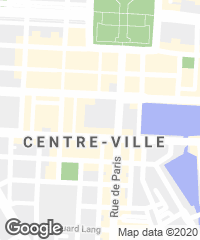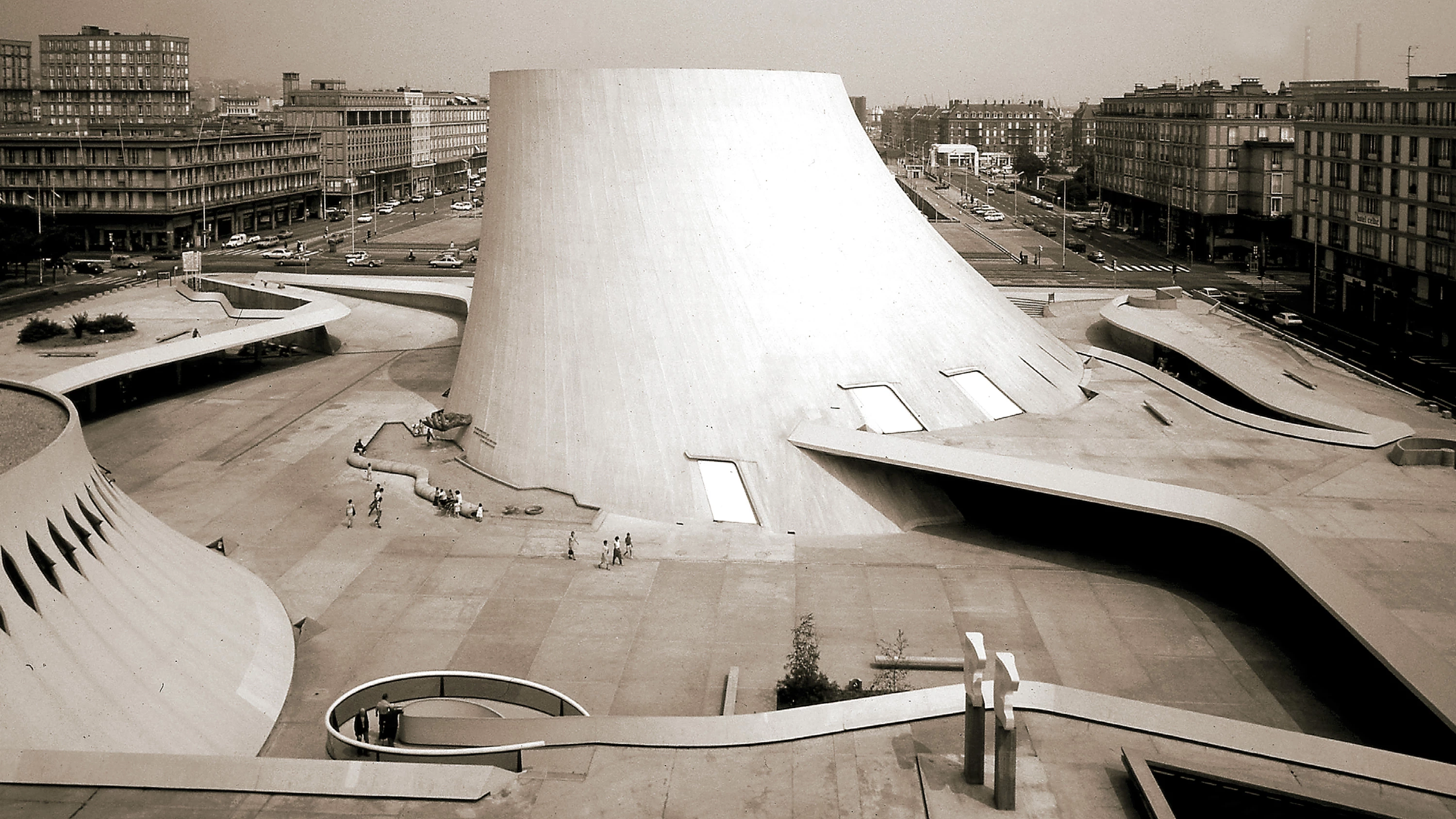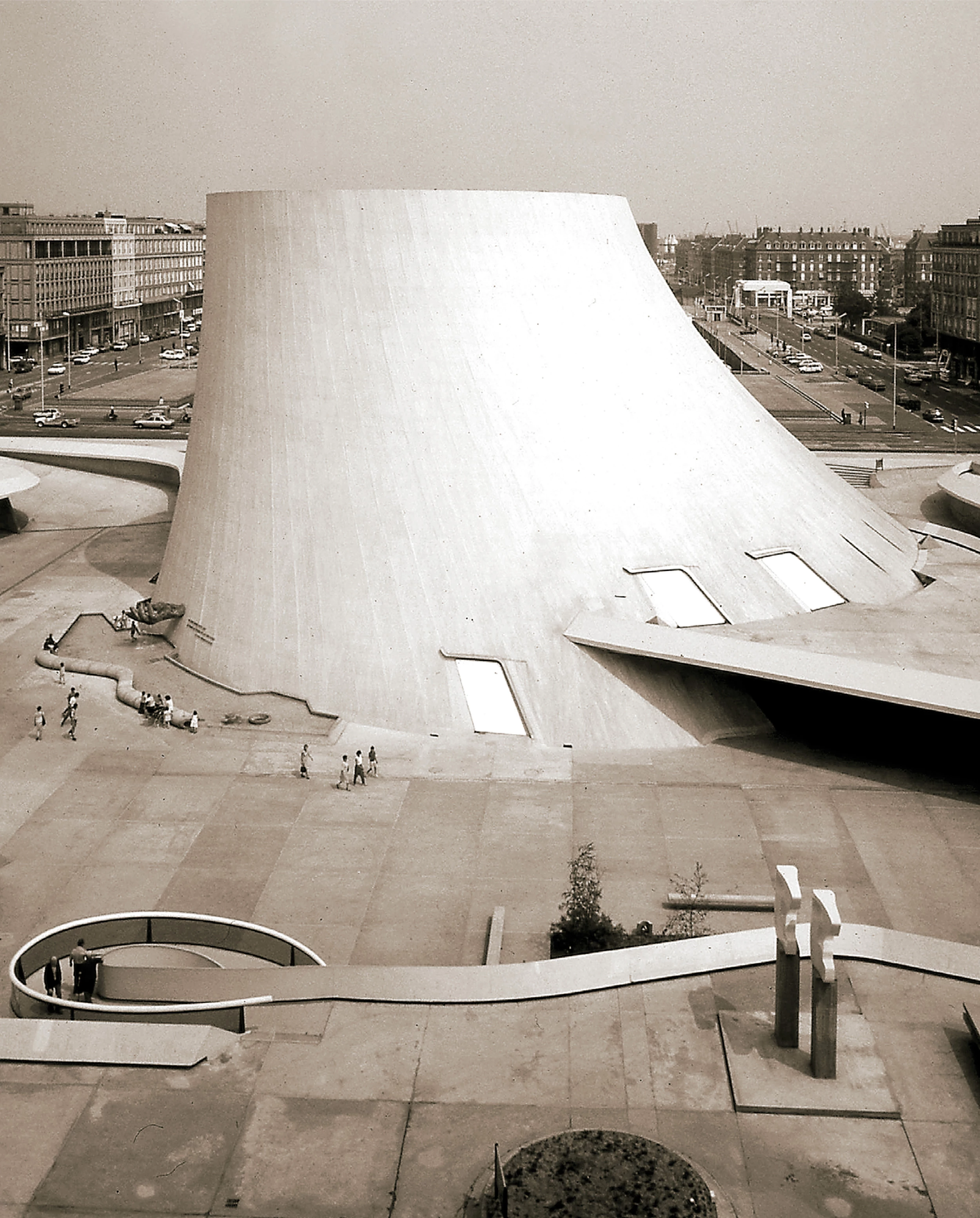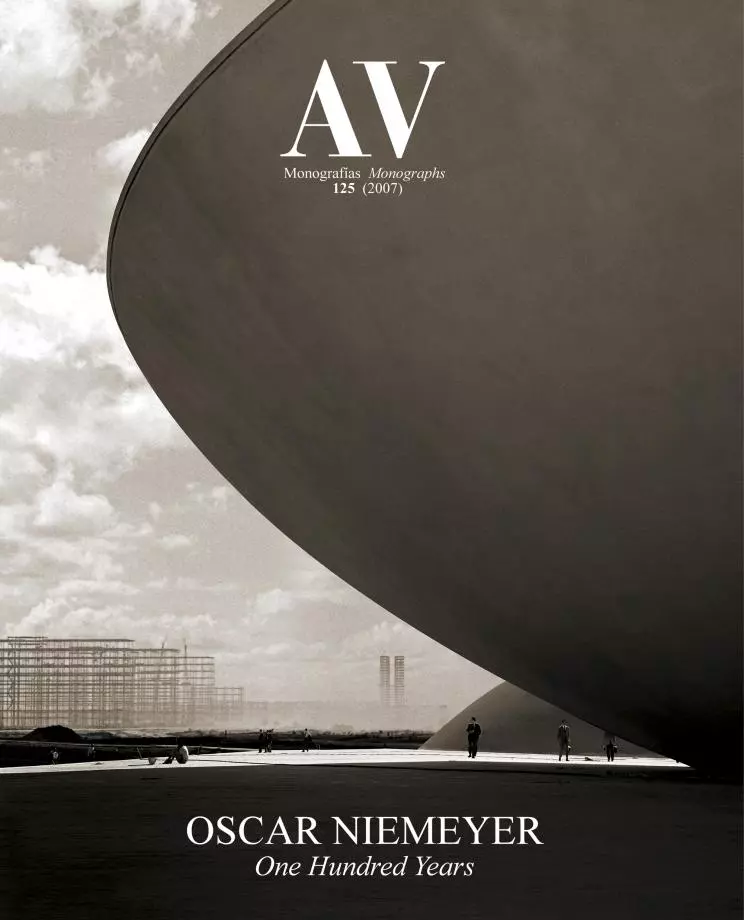Cultural Center, Le Havre
Oscar Niemeyer- Type Cultural center Culture / Leisure
- Date 1972 - 1983
- City Le Havre
- Country France
- Photograph Michel Moch


Baptized officially as Espace Oscar Niemeyer, this cultural center in Le Havre, a French city in the Normandy region, was commissioned by the town council. The building takes up a square urban block, with sides measuring some 120 meters, within a design conceived by Auguste Perret to remodel the city center, which was partially destroyed during the conflict. The plot in which the cultural center goes up has a privileged location, because one of its sides faces the city canal.
The initial program included a theater of innovative design, proposed by the then Minister of Culture, Jack Lang. “When studying this project my main concern was blending it adequately into the city’s architecture”, Niemeyer recalls. The architect’s solution was to divide the spaces into two main volumes. In the smaller one, in the form of a truncated cone, of symmetrical base and with small openings, there is a multipurpose hall that has from 300 to 600 seats. This volume, in the northeast, houses the areas for theater companies, workshops, auditorium, recording studios and meeting room. The taller volume, asymmetric and with no visible openings, is devoted to the theater proper, with a plateau of 1,150 seats. This volume is southwest of the block. The project envisaged the construction of a revolving stage, which was finally not executed. In this volume there is a movie theater and a large foyer. These forms inspired the nickname, given by the local citizens, of ‘volcano’. The white volumes of the piece contrast with the sober character of Perret’s urban blocks.
The two main volumes are connected by an esplanade that is buried three meters with respect to the public thoroughfares. In this way Niemeyer created another square below street level: “sheltered from the cold and from the dominant winds, a large outdoor hall, creating in the buildings curved, smooth, blind, almost abstract surfaces”. The square is wrapped by a retail area with restaurants, cafeterias and shops, and there is a small underground parking. The two levels are linked by two ramps: the first, generous and wide, takes up one of the ends of the urban block and the other, sculptural, highlights the opposite end. “Of the projects built abroad, the Le Havre Cultural Center is probably that which represents the dominant social content”, Niemeyer wrote. The Italian critic Bruno Zevi said, during the Cairo Congress, that the building is among the best ten works of contemporary architecture... [+]







